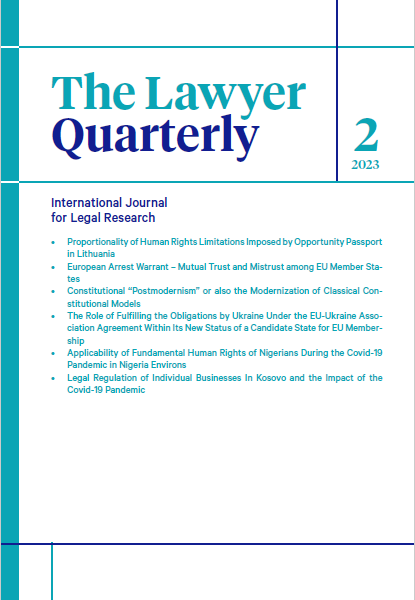CONSTITUTIONAL “POSTMODERNISM” OR ALSO THE MODERNIZATION OF CLASSICAL CONSTITUTIONAL MODELS
Main Article Content
Abstract
The revolutionary political changes of the 1990s led to processes culminating in installation of new constitutional democracies in Central and Eastern European countries. Adoption of new constitutions was thus linked both to use of established models of classical Western democracies and to the constitutional creativity of new democratically elected authorities. The constitutional changes thus focused mainly on the installation of the separation of powers in the model of parliamentary form of government, the development of the concept of territorial self-governing units, the installation of so-called independent constitutional bodies, the constitutional enshrinement of the classical catalogue of fundamental rights and freedoms, and the constitutional establishment of constitutional review through constitutional courts. From the comparative point of view, the constitutional character of new democracies thus clearly demonstrates their modernising usefulness and enrichment of the experience of classical constitutionalism.
Article Details
Copyright and originality of the offered manuscript
1. It is assumed that the manuscript offered has not been previously published. It is expected that the authors will inform the editorial board of TLQ if the entire manuscript, its parts or some relevant results have been previously published in a different publication at the level of an article in a reviewed scientific magazine or monograph. Should the editorial board of TLQ conclude that this condition was not fulfilled the review process may be terminated.
2. It is assumed that the submitted manuscript is an original academic work. If that is not the case the author needs to provide information regarding all circumstances that could raise doubts whether the manuscript is the outcome of original research.
3. By submitting the manuscript the author acknowledges that after the publication in The Lawyer Quarterly her/his work will be made available online to the Internet users and also kept by the Library of the Academy of Sciences of the Czech Republic. Author's rights to further use the work remain unabridged.

